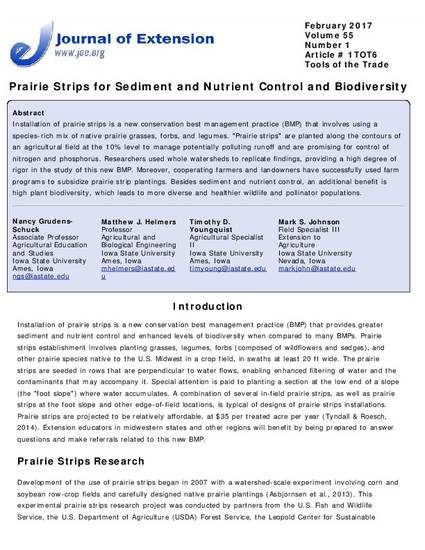
Installation of prairie strips is a new conservation best management practice (BMP) that involves using a species-rich mix of native prairie grasses, forbs, and legumes. "Prairie strips" are planted along the contours of an agricultural field at the 10% level to manage potentially polluting runoff and are promising for control of nitrogen and phosphorus. Researchers used whole watersheds to replicate findings, providing a high degree of rigor in the study of this new BMP. Moreover, cooperating farmers and landowners have successfully used farm programs to subsidize prairie strip plantings. Besides sediment and nutrient control, an additional benefit is high plant biodiversity, which leads to more diverse and healthier wildlife and pollinator populations.
Available at: http://works.bepress.com/matthew_helmers/128/

This is an article by Grudens-Schuck, N., Helmers, M. J., Youngquist, T. D., & Johnson, M. S. (2017). Prairie strips for sediment and nutrient control and biodiversity. Journal of Extension, 55(1) Article 1TOT6. Available at: https://www.joe.org/joe/2017february/tt6.php